Prior to this bird a week ago today I’d never had such a prolonged session with a preening kingfisher up close.
- Image techs for this series are at or near:
1/3200, f/6.3, ISO 800, Canon 7D Mark II, Canon EF 500mm f/4L IS II USM + EF 1.4 III Extender
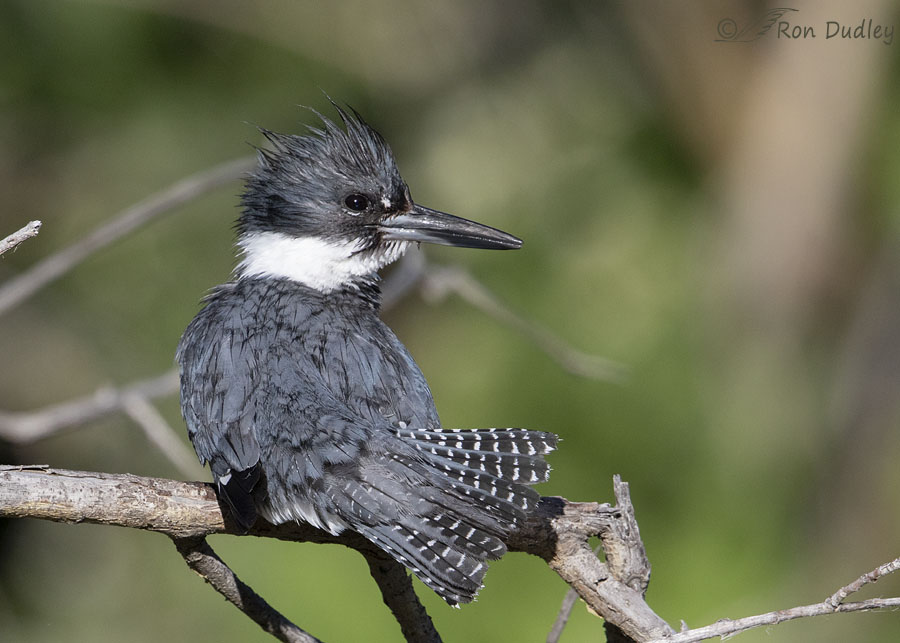
It was the same male I’ve posted previously, on his favorite perch. Usually he’s in fishing mode when he’s here but this time he began an extended preening session while he was still wet from an earlier dive.
Most of the time he had his back to me but that worked out just fine because he often had his head twisted around to face my direction during the preening process.
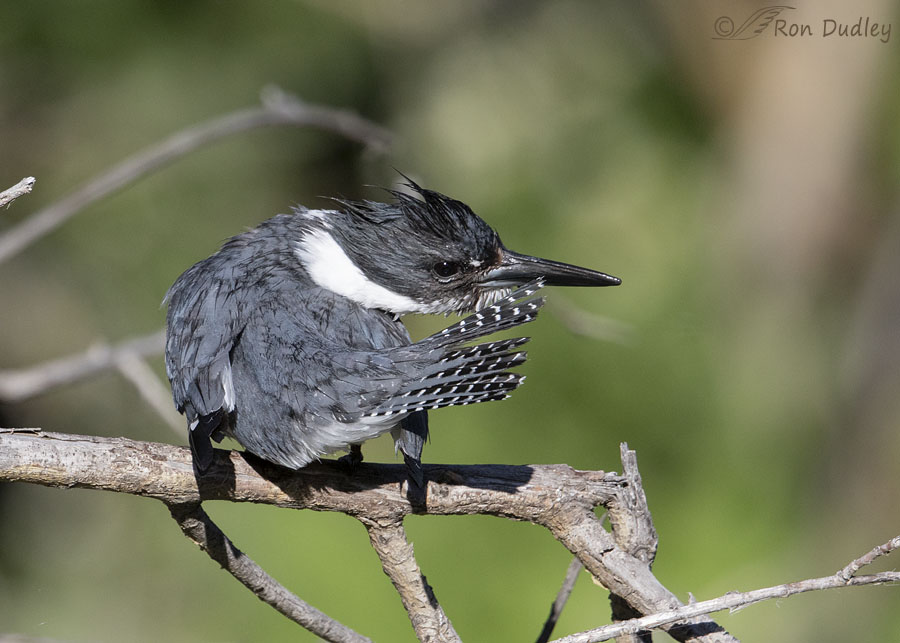
He spent a great deal of time rubbing preen oil onto his plumage including individual tail feathers and…
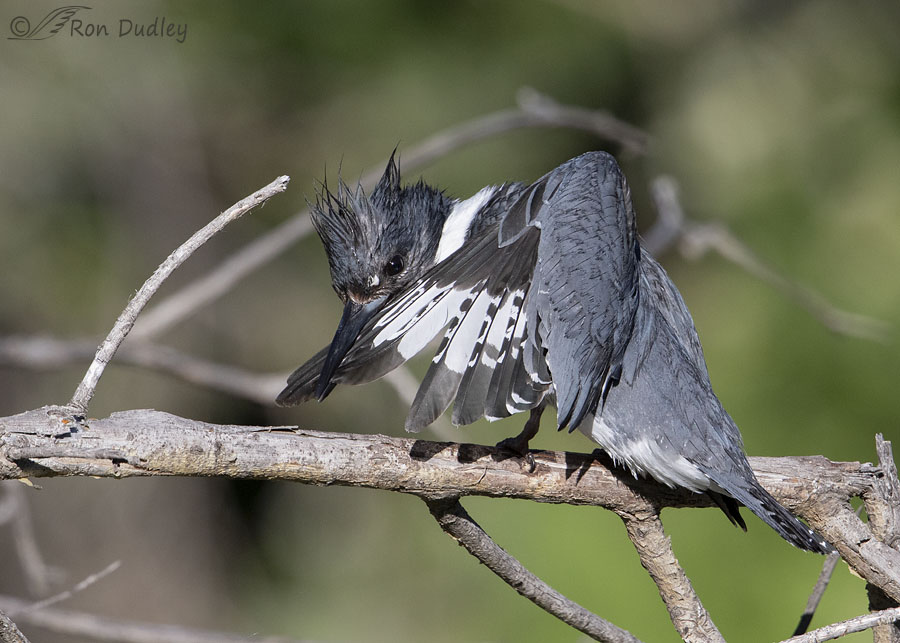
wing primaries. He also smeared it onto contour feathers on other portions of his body.
As most birds do he obtained the oil from his uropygial gland (preen gland) located at the base of his tail. He was smearing it on his bill and then transferring it to his feathers by rubbing his bill over them or drawing individual feathers through his mandibles.
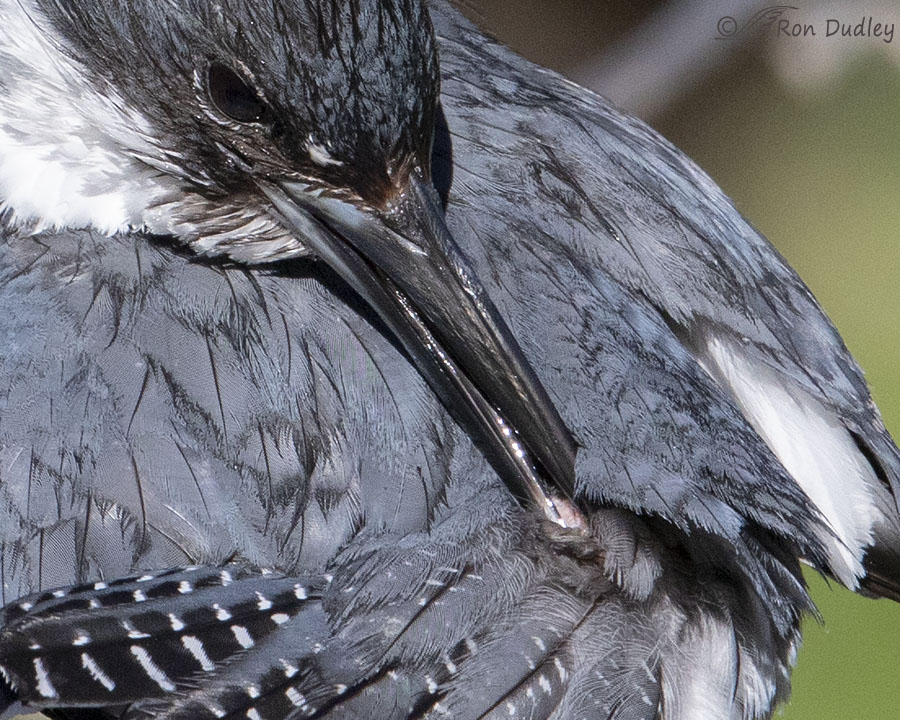
In this huge crop of the previous photo I believe we’re actually seeing part of his preen gland between the tips of his bill.
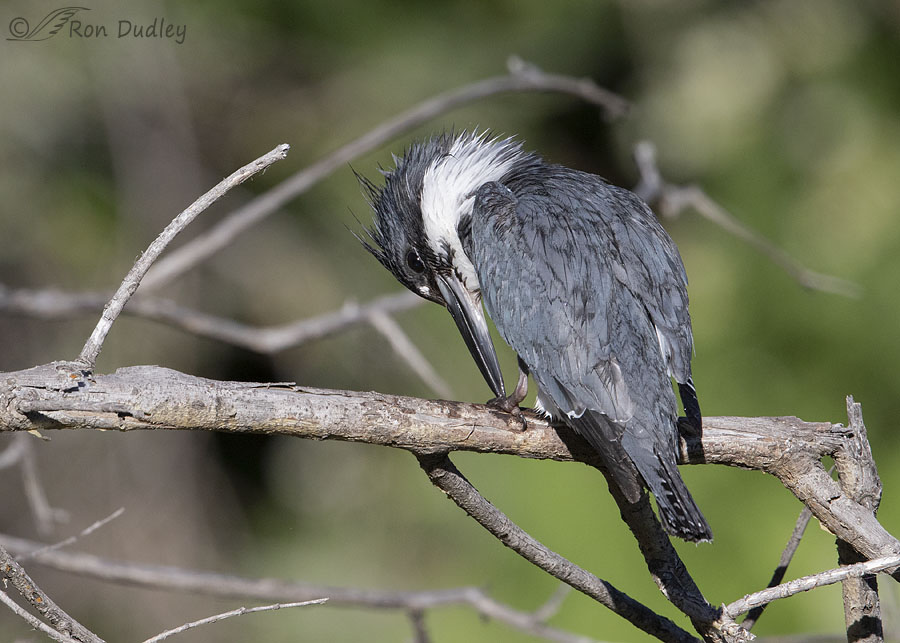
As many birds do he was also rubbing preen oil on the scales of his feet and legs.
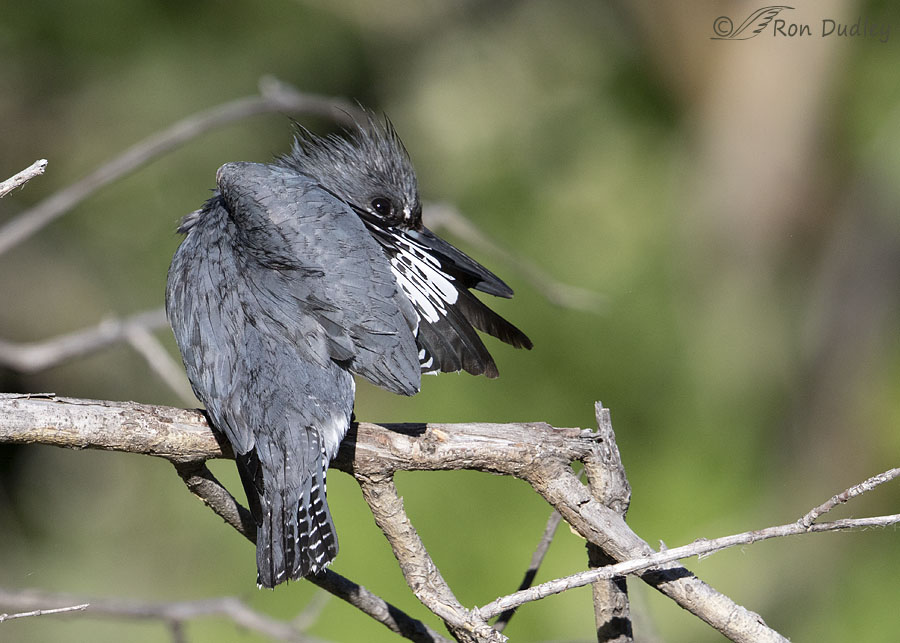
At times it looked like he was playing peekaboo with me. I just think this is a cute pose.
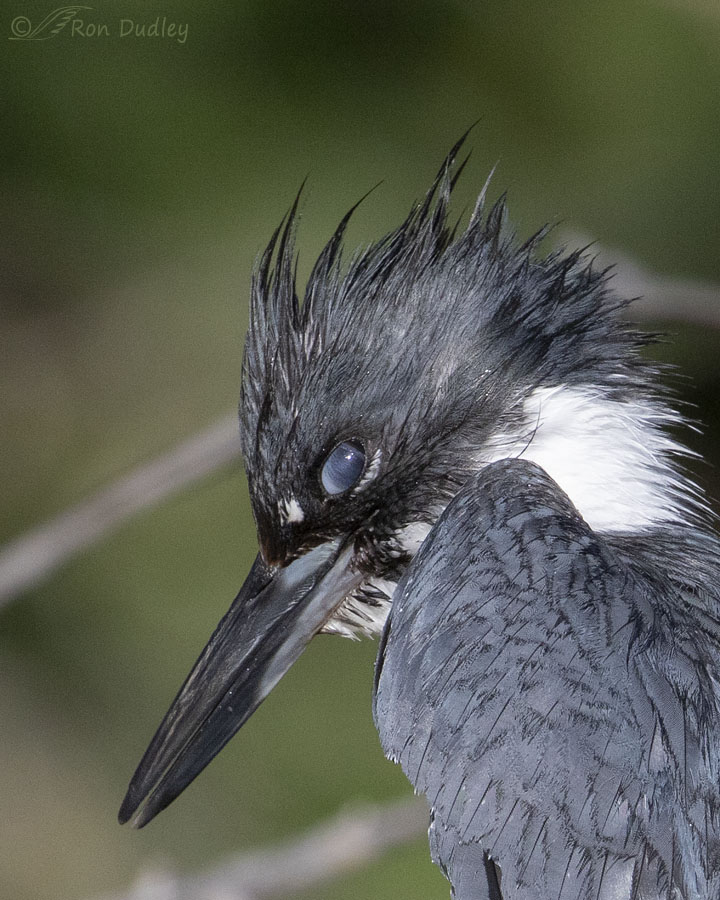
During the preening process he’d often protect his eyes by closing his nictitating membranes. When this happens it can be aggravating to bird photographers but I find the membrane biologically and structurally interesting and this is such a clear, sharp shot I cropped tightly on it to reveal as much detail as possible.
Here I estimate the membrane to be about 90% closed.
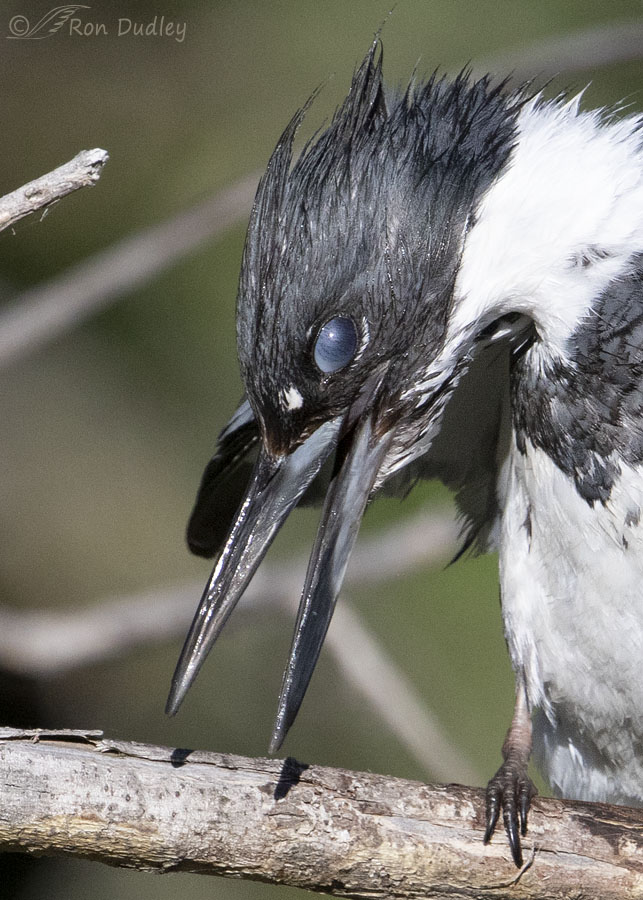
In this shot it’s completely closed.
We also get a good look at one of his syndactyl feet typical of kingfishers and hornbills. .
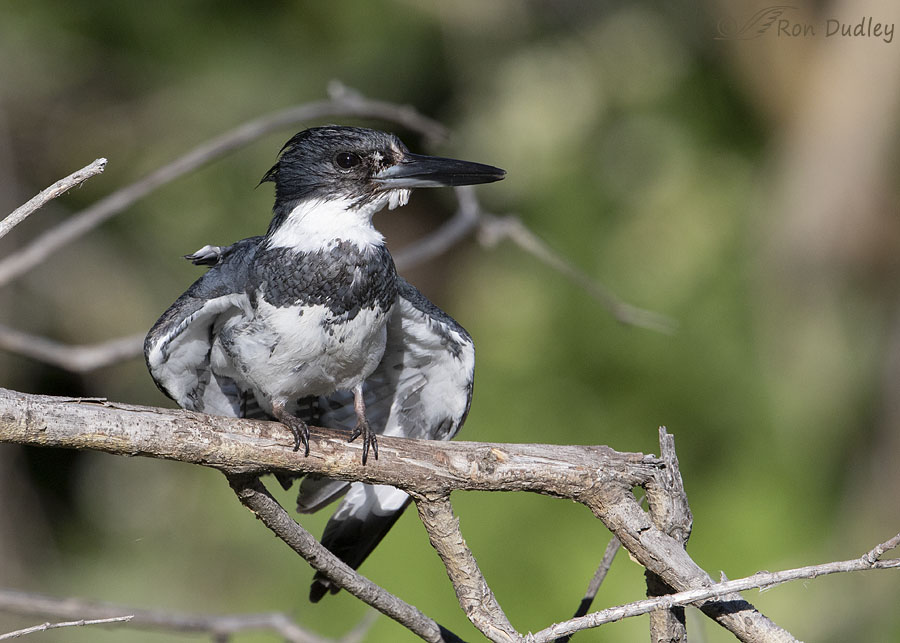
Toward the end of his preening session he turned on his perch and repeatedly shook his body, often with his wings hanging down. I wouldn’t really call it a rouse because his feathers were never fluffed up.
Soon after this shot was taken he flew to another fishing perch a little further away and I’d already taken many hundreds of photos of him so I left the area to look for other birds.
I’ll always wonder if leaving him was a mistake because it was very likely that he would eventually come back to this perch and closeup time with kingfishers is a rare commodity for bird photographers.
Ron


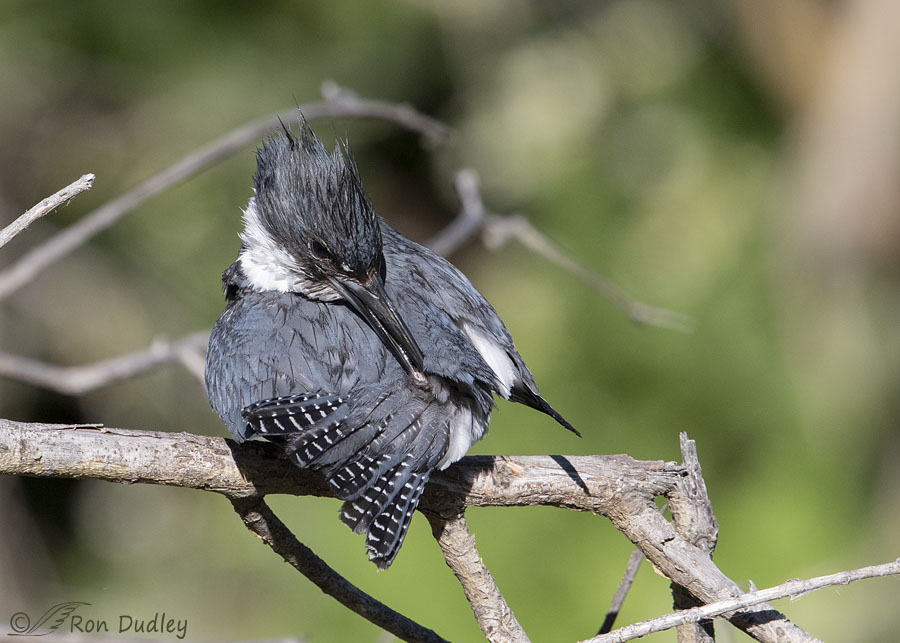
I’d recognize that branch anywhere
Nictitating membranes (a bit scary/zombie looking), uropygial glands, syndactyly, oh my!
That last one sent me on a bird toe anatomy lesson. the syndactyl toes are even more evident to me on the left foot in the last photo.
Thanks for the lessons, Mr. Dudley.
“Mr. Dudley”. I’ve come up in the world!
Yup, that branch is gonna become almost as famous as Miss Kitty’s Long Branch…
We’re showing our age: you said it, I remember watching it.
I was hoping there’d be somebody old enough to know what I was talking about.
Fascinating and beautiful.
Something to hang onto as I go about a day which will have its challenges.
As always, many, many thanks.
Thanks, EC. Best of luck with your challenges today!
I always enjoy watching birds preen. Thank you for the breakfast treat.
Glad you enjoyed it, April. i thought you might be out shooting this morning.
Great series! I’m envious. I’ve never found a kingfisher so cooperative, especially within decent camera range. I’m glad you showed the nictitating membrane. I know many photographers don’t like it, but it’s an important structure and well worth showing. To be able to capture a photo of the bill squeezing the preen gland is an amazing shot. Even when close, it is usually obscured by feathers. I’m glad you included that shot. Great way to start the morning.
“To be able to capture a photo of the bill squeezing the preen gland is an amazing shot.”
I was really tickled to get it, Dan. I can only remember capturing it one other time, in a Black Crowned Night Heron.
Great series, and happy to learn more about preening and preen oil. Nice close-ups of the nictitating membranes, too!
Thanks on both counts, Cathy.
Amazing series! Thanks for sharing!
Thanks, Charlotte.
Great series, Ron! Still amazed that he cooperated to be photographed so well. With water still cold in places getting the “grease” on IS necessary! They are VERY efficient at it…. Nictitating membrane is interesting up close.
Nictitating membrane is interesting up close.
Local weather noted the contrast of both snow and fires in UT this morning….
He was back on the same perch this morning, Judy. Love that bird! This time he brought a young lady with him – one of this year’s offspring I believe.
What an amazing experience, Ron! Thanks for sharing it this morning. Virtual birding at its best!
“Virtual birding at its best”.
Thanks for that, Diane.
I like your blog not only because of the beauty you bring every day, but also
because of the interesting stuff you teach–including “new” words, like “syndactyl”
—-it all wakes me up each morning in a good way !
That’s good to know, Kris. Thank you.
He has provided you and us with many interesting and educational photos. Great series again. Years ago when I first started taking eagle photos here I very often would have one where its eye was closed. At the time I did not know anything about the nicitating membrane. And I know how you feel when you leave a bird situation that was so rewarding.
Thank you, Everett.
Great pictures Ron- and so sharp! Congrats for getting a taking advantage of a super photo-op. Your pictures always inspire me to get out there on my own birding photog adventures…
We all need inspiration from something or someone, Richard. Thanks for letting me know you occasionally get some from me.